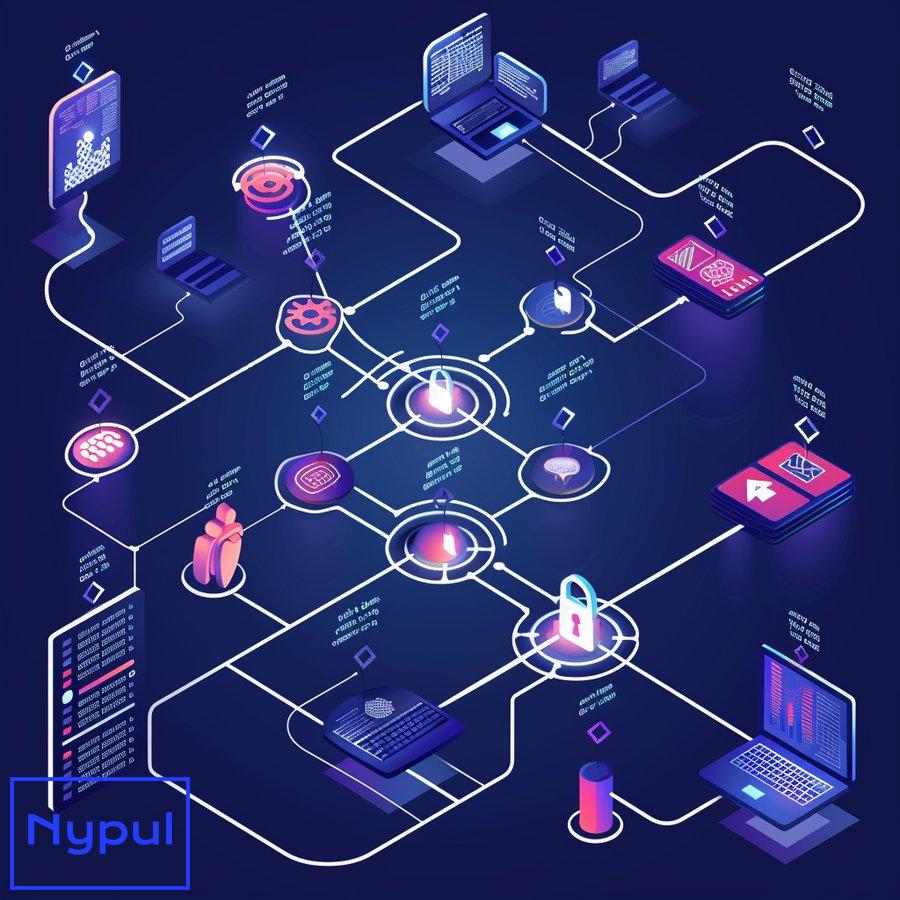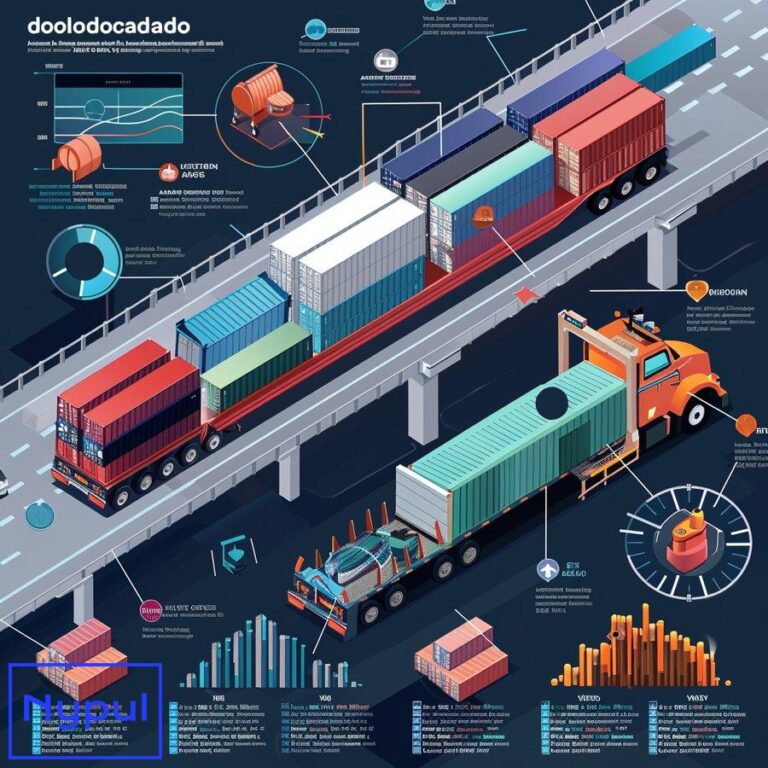What Biometrics Are Used for Security Purposes
What are biometrics and their role in security?
Biometrics refers to the measurement and analysis of unique physical or behavioral characteristics for identification and authentication purposes. These characteristics, known as biometric identifiers, are inherent to an individual and difficult to replicate or forge. In the realm of security, biometrics play a crucial role by providing a robust and reliable method of verifying a person’s identity.
The fundamental concept behind biometric security is that certain physical and behavioral traits are unique to each individual. Unlike traditional security measures such as passwords or ID cards, which can be lost, stolen, or shared, biometric identifiers are intrinsically linked to a person. This inherent connection makes biometrics a powerful tool for enhancing security across various applications and industries.
Biometric identifiers: Physical vs. Behavioral
Physical biometrics involve the measurement of distinct anatomical features. These include:
Fingerprints: The unique patterns of ridges and valleys on fingertips.
Facial features: The geometry and proportions of facial structures.
Iris patterns: The intricate structures within the colored part of the eye.
Hand geometry: The shape and size of an individual’s hand.
DNA: The genetic code unique to each person.
Behavioral biometrics, on the other hand, focus on patterns in human actions. Examples include:
Voice recognition: The distinct characteristics of a person’s speech.
Gait analysis: The unique way an individual walks.
Signature dynamics: The speed, pressure, and style of handwriting.
Keystroke patterns: The rhythm and timing of typing on a keyboard.
The role of biometrics in security extends beyond mere identification. These technologies serve multiple purposes:
Authentication: Verifying that individuals are who they claim to be.
Access control: Granting or denying entry to physical spaces or digital systems.
Fraud prevention: Detecting and deterring attempts at identity theft or impersonation.
Law enforcement: Aiding in criminal investigations and suspect identification.
Border control: Enhancing immigration and customs processes.
The integration of biometrics into security systems has revolutionized the way organizations approach identity verification and access management. By leveraging the unique biological traits of individuals, biometric systems offer a level of security that is difficult to compromise through traditional means of deception or theft.
The evolution of biometric security
The concept of using physical characteristics for identification is not new. Fingerprints have been used in forensic science since the late 19th century. However, the advent of advanced computing technologies and sophisticated algorithms has propelled biometrics into the forefront of modern security solutions.
Early biometric systems were limited in their accuracy and scope, often relying on single modalities such as fingerprints. As technology progressed, multimodal biometric systems emerged, combining multiple biometric identifiers to enhance accuracy and reliability. This evolution has led to more robust and versatile security solutions capable of addressing a wide range of security challenges.
The role of biometrics in security continues to expand as new technologies and applications emerge. From unlocking smartphones to securing international borders, biometric systems are becoming an integral part of our daily lives and global security infrastructure.
Biometrics in the digital age
The digital transformation of society has brought new dimensions to the role of biometrics in security. As more aspects of our lives move online, the need for secure digital identities becomes increasingly critical. Biometric technologies offer a bridge between the physical and digital worlds, providing a means to authenticate individuals across various platforms and devices.
In the context of cybersecurity, biometrics serve as a powerful defense against unauthorized access and data breaches. By incorporating biometric authentication into login processes, organizations can significantly reduce the risk of compromised accounts due to weak or stolen passwords.
The integration of biometrics with other emerging technologies, such as artificial intelligence and blockchain, is opening new avenues for enhanced security and privacy protection. These synergies are driving innovation in fields such as decentralized identity management and continuous authentication systems.
As we delve deeper into the digital age, the role of biometrics in security is likely to become even more pronounced. The challenge lies in balancing the benefits of enhanced security with the need to protect individual privacy and personal data. This balance will be crucial in shaping the future landscape of biometric security applications.
What types of biometrics are commonly used?
Biometric technologies have evolved significantly, offering a diverse array of options for identity verification and authentication. Each type of biometric has its unique characteristics, advantages, and applications. Understanding these common biometric modalities is essential for organizations and individuals seeking to implement or interact with biometric security systems.
![]()
Fingerprint recognition
Fingerprint recognition remains one of the most widely adopted biometric technologies. This method analyzes the unique patterns of ridges and valleys on an individual’s fingertips. Fingerprint recognition systems typically use one of three approaches:
Minutiae-based: Focuses on specific points where ridge lines end or split.
Pattern-based: Analyzes the overall fingerprint pattern, including arches, loops, and whorls.
Ultrasound: Uses high-frequency sound waves to penetrate the epidermal layer of skin, creating a 3D image of the fingerprint.
Fingerprint recognition is widely used in various applications, from smartphone unlocking to access control in secure facilities. Its popularity stems from its relatively low cost, high accuracy, and user acceptance.
Facial recognition
Facial recognition technology has gained significant traction in recent years, particularly with the advent of advanced machine learning algorithms. This biometric modality analyzes facial features and geometry to identify or verify an individual. Key aspects of facial recognition include:
Landmark detection: Identifying specific facial features such as eyes, nose, and mouth.
Feature extraction: Analyzing the spatial relationships between facial landmarks.
Matching: Comparing the extracted features against a database of known faces.
Facial recognition has found applications in surveillance, border control, and consumer electronics. Its non-intrusive nature and ability to work at a distance make it particularly suitable for high-traffic areas.
Iris recognition
Iris recognition focuses on the unique patterns within the colored part of the eye. This biometric modality is known for its high accuracy and stability over time. The process typically involves:
Image acquisition: Capturing a high-resolution image of the eye.
Segmentation: Isolating the iris from the surrounding eye structures.
Feature extraction: Analyzing the intricate patterns within the iris.
Matching: Comparing the extracted features against a database.
Iris recognition is often used in high-security environments due to its exceptional accuracy and resistance to false matches. It has applications in border control, secure access to facilities, and national ID programs.
Voice recognition
Voice recognition, also known as speaker recognition, analyzes the unique characteristics of an individual’s voice. This biometric modality can be used for both identification and verification purposes. Key components of voice recognition include:
Acoustic analysis: Examining the physical characteristics of the voice.
Linguistic analysis: Analyzing speech patterns and pronunciation.
Behavioral analysis: Considering factors such as accent and speaking style.
Voice recognition is particularly useful for remote authentication scenarios, such as telephone banking or voice-activated smart home devices.
Hand geometry
Hand geometry biometrics measure and analyze the shape and size of an individual’s hand. This includes factors such as:
Finger length and width
Palm size
Hand thickness
While less common than some other biometric modalities, hand geometry systems are still used in certain access control applications, particularly in environments where hygiene is a concern.
Retinal scanning
Retinal scanning analyzes the unique patterns of blood vessels in the retina at the back of the eye. This biometric modality is known for its high accuracy but is less commonly used due to its more intrusive nature. The process involves:
Illuminating the retina with infrared light
Capturing an image of the retinal blood vessel pattern
Analyzing and comparing the pattern against a database
Retinal scanning is typically reserved for high-security applications where the highest level of accuracy is required.
DNA biometrics
DNA biometrics involve analyzing an individual’s genetic code for identification purposes. While highly accurate, DNA biometrics are not typically used for real-time authentication due to the time and resources required for analysis. Applications include:
Forensic investigations
Paternity testing
Ancestry tracing
Emerging biometric modalities
As technology advances, new biometric modalities continue to emerge. Some of these include:
Gait analysis: Studying the unique way an individual walks.
Ear shape recognition: Analyzing the distinctive shape of a person’s ear.
Vein pattern recognition: Examining the patterns of veins beneath the skin.
These emerging technologies offer potential alternatives or complements to more established biometric modalities, potentially addressing specific security needs or overcoming limitations of existing systems.
| Biometric Modality | Key Features | Common Applications | Accuracy Level |
|---|---|---|---|
| Fingerprint Recognition | Unique ridge patterns | Smartphone unlock, access control | High |
| Facial Recognition | Facial geometry and features | Surveillance, border control | Moderate to High |
| Iris Recognition | Intricate iris patterns | High-security facilities, national ID | Very High |
| Voice Recognition | Vocal characteristics | Remote authentication, voice assistants | Moderate |
| Hand Geometry | Hand shape and size | Access control in specific environments | Moderate |
| Retinal Scanning | Blood vessel patterns in retina | High-security applications | Very High |
| DNA Biometrics | Genetic code | Forensics, paternity testing | Extremely High |
The choice of biometric modality depends on various factors, including the specific security requirements, environmental conditions, user acceptance, and cost considerations. Many modern biometric systems employ multimodal approaches, combining two or more biometric modalities to enhance accuracy and reliability.
As biometric technologies continue to evolve, we can expect to see further refinements in existing modalities and the emergence of new biometric identifiers. The ongoing challenge will be to balance the need for robust security with user convenience and privacy considerations.
How do biometric systems operate?
Biometric systems are complex technologies that involve multiple stages of data processing and analysis. Understanding the operational principles of these systems is crucial for both implementers and users of biometric security solutions. The general process of biometric system operation can be broken down into several key stages, each playing a vital role in the overall functionality and accuracy of the system.
Data acquisition

The first step in any biometric system is the collection of biometric data from an individual. This process varies depending on the specific biometric modality being used:
Fingerprint systems: Use optical, capacitive, or ultrasonic sensors to capture fingerprint images.
Facial recognition: Employ cameras, often with infrared capabilities for 3D mapping.
Iris recognition: Utilize specialized near-infrared cameras to capture detailed iris images.
Voice recognition: Record audio samples of an individual’s speech.
The quality of data acquisition is crucial, as it directly impacts the system’s overall performance. Factors such as lighting conditions, sensor quality, and user cooperation can significantly affect the data collection process.
Preprocessing
Once the raw biometric data is collected, it undergoes preprocessing to enhance its quality and prepare it for feature extraction:
Image enhancement: Adjusting contrast, removing noise, and normalizing orientation.
Segmentation: Isolating the relevant biometric information from the background or surrounding data.
Quality assessment: Evaluating the captured data to ensure it meets minimum quality standards.
Preprocessing is essential for improving the accuracy and reliability of subsequent stages in the biometric system operation.
Feature extraction
In this stage, the system analyzes the preprocessed data to identify and extract distinctive features that can be used for matching:
Fingerprints: Identifying minutiae points, ridge patterns, or texture information.
Facial recognition: Measuring distances between facial landmarks or analyzing texture patterns.
Iris recognition: Encoding the iris pattern into a compact representation, often using mathematical algorithms like Gabor wavelets.
Voice recognition: Extracting acoustic features such as pitch, tone, and frequency characteristics.
The extracted features are typically converted into a digital template, which serves as a compact representation of the individual’s biometric identity.
Template storage
Biometric templates are stored in a database for future comparison. The storage method and security measures employed are critical aspects of biometric system operation:
Centralized storage: Templates are kept in a central database, offering easier management but potentially increasing security risks.
Distributed storage: Templates are stored on individual devices or smart cards, enhancing privacy but potentially complicating system management.
Encrypted storage: Templates are encrypted to protect against unauthorized access or tampering.
The choice of storage method depends on factors such as the application context, privacy regulations, and security requirements.
Matching process
When an individual attempts to authenticate or identify themselves, the system compares the newly captured biometric data against the stored templates:
1:1 Matching (Verification): The system compares the captured data against a specific template to confirm the individual’s claimed identity.
1:N Matching (Identification): The system searches the entire database to find a matching template, identifying the individual from a larger population.
The matching process typically involves calculating a similarity score between the captured data and stored templates. This score is then compared against a predetermined threshold to make an accept/reject decision.
Decision making
Based on the matching results, the biometric system makes a decision:
Positive match: The system confirms the individual’s identity or grants access.
Negative match: The system rejects the authentication attempt or fails to identify the individual.
Inconclusive result: In some cases, the system may request additional data or defer to human intervention.
The decision-making process often involves balancing false accept rates (FAR) and false reject rates (FRR) to achieve the desired level of security and user convenience.
Multimodal biometric systems
Many modern biometric systems combine multiple biometric modalities to enhance accuracy and reliability:
Fusion at the feature level: Combining features from different biometric modalities before matching.
Fusion at the match score level: Combining similarity scores from different modalities to make a final decision.
Fusion at the decision level: Making separate decisions for each modality and then combining these decisions.
Multimodal systems can overcome limitations of individual biometric modalities and provide more robust security solutions.
Continuous authentication
Some advanced biometric systems employ continuous authentication, constantly monitoring and verifying the user’s identity throughout a session:
Behavioral biometrics: Analyzing patterns in user behavior, such as typing rhythm or mouse movements.
Passive facial recognition: Periodically capturing and verifying facial images without user intervention.
Continuous authentication enhances security by detecting potential unauthorized access attempts in real-time.
| Operational Stage | Key Activities | Importance |
|---|---|---|
| Data Acquisition | Capturing raw biometric data | Critical for overall system performance |
| Preprocessing | Enhancing and normalizing data | Improves accuracy of subsequent stages |
| Feature Extraction | Identifying distinctive biometric features | Forms the basis for matching and identification |
| Template Storage | Securely storing biometric templates | Crucial for privacy and system integrity |
| Matching Process | Comparing captured data with stored templates | Determines authentication or identification outcome |
| Decision Making | Accepting or rejecting based on match results | Balances security and user experience |
The operation of biometric systems involves a complex interplay of hardware, software, and algorithmic components. As these systems continue to evolve, we can expect to see advancements in areas such as:
Artificial intelligence integration: Enhancing feature extraction and matching algorithms.
Edge computing: Processing biometric data locally to improve speed and privacy.
Liveness detection: Developing more sophisticated methods to prevent spoofing attacks.
Understanding the operational principles of biometric systems is essential for effective implementation, maintenance, and use of these technologies in various security applications. As biometric systems become more prevalent in our daily lives, this knowledge will be increasingly valuable for both professionals in the field and end-users of biometric security solutions.
What are the advantages of using biometrics for security?
Biometric security systems offer numerous advantages over traditional authentication methods, making them an increasingly popular choice for organizations and individuals seeking robust security solutions. These advantages span various aspects of security, from enhanced accuracy to improved user experience. Understanding these benefits is crucial for decision-makers considering the implementation of biometric technologies.
Enhanced security
One of the primary advantages of biometric security is the significant improvement in overall security levels:
Uniqueness: Biometric identifiers are inherently unique to each individual, making them extremely difficult to forge or replicate.
Non-transferability: Unlike passwords or access cards, biometric traits cannot be shared or transferred between individuals.
Resistance to theft: Biometric data is not susceptible to theft in the same way that physical tokens or written passwords are.
The use of biometrics substantially reduces the risk of unauthorized access, identity theft, and fraud. This enhanced security is particularly valuable in high-stakes environments such as financial institutions, government facilities, and critical infrastructure.
Improved accuracy
Biometric systems offer a level of accuracy that surpasses many traditional security methods:
Low error rates: Advanced biometric technologies have significantly reduced false accept rates (FAR) and false reject rates (FRR).
Multimodal capabilities: Combining multiple biometric modalities further enhances accuracy and reliability.
Continuous improvement: Machine learning algorithms allow biometric systems to improve their accuracy over time.
The high accuracy of biometric systems minimizes the risk of security breaches dueand enhances user trust in security measures.
User convenience
Biometric systems offer a more convenient user experience compared to traditional authentication methods:
No need for passwords: Users do not have to remember complex passwords or PINs, reducing the cognitive load associated with password management.
Speed of authentication: Biometric verification is typically faster than entering passwords or searching for access cards, allowing for quick access to secured areas or systems.
Seamless integration: Many biometric systems can be easily integrated into existing security infrastructures, enhancing user experience without significant disruption.
The convenience offered by biometric systems can lead to higher user acceptance and satisfaction, making them an attractive option for organizations looking to enhance security while maintaining a positive user experience.
Cost-effectiveness
While the initial investment in biometric technology may be higher than traditional methods, the long-term cost benefits can be significant:
Reduced administrative costs: Biometric systems can lower the costs associated with password resets, card replacements, and other administrative tasks related to traditional authentication methods.
Lower fraud-related losses: Enhanced security reduces the likelihood of fraud and unauthorized access, leading to potential savings in losses due to theft or data breaches.
Scalability: As organizations grow, biometric systems can be scaled more easily than traditional security measures, allowing for efficient expansion without proportional increases in costs.
Over time, these cost savings can make biometric solutions a financially viable option for organizations of all sizes.
Regulatory compliance
Many industries are subject to strict regulatory requirements regarding data protection and identity verification. Biometric systems can help organizations meet these requirements:
Data protection regulations: Biometric authentication can enhance compliance with regulations such as GDPR (General Data Protection Regulation) and HIPAA (Health Insurance Portability and Accountability Act).
Identity verification standards: Many sectors require robust identity verification processes, which biometrics can provide through unique and secure identification methods.
By implementing biometric solutions, organizations can demonstrate their commitment to security and compliance while minimizing legal risks associated with inadequate identity verification practices.
| Advantage | Description | Impact |
|---|---|---|
| Enhanced Security | Unique and non-transferable identifiers | Reduces unauthorized access and fraud |
| Improved Accuracy | Low error rates and multimodal capabilities | Minimizes security breaches |
| User Convenience | Quick and seamless authentication | Increases user satisfaction |
| Cost-effectiveness | Lower administrative and fraud-related costs | Provides long-term financial benefits |
| Regulatory Compliance | Meets industry standards for identity verification | Reduces legal risks |
The advantages of using biometrics for security are compelling and multifaceted. As organizations continue to prioritize security in an increasingly digital world, the adoption of biometric technologies is likely to grow. Understanding these benefits is essential for stakeholders considering integrating biometrics into their security strategies.
What challenges and limitations do biometric systems face?
Despite their numerous advantages, biometric systems also face several challenges and limitations that must be addressed for effective implementation. Understanding these challenges is critical for organizations considering the adoption of biometric technologies.

Privacy concerns
The collection and storage of biometric data raise significant privacy issues:
- Data ownership: Individuals may question who owns their biometric data and how it is used.
- Consent issues: Obtaining informed consent from users can be complicated, especially if data is shared with third parties.
- Potential misuse: There is a risk that biometric data could be misused by unauthorized entities or government agencies.
Organizations must implement stringent privacy policies and transparent practices to address these concerns effectively.
False positives and false negatives
While advancements in technology have improved accuracy, biometric systems are not infallible:
- False positives (FAR): This occurs when a system incorrectly accepts an unauthorized individual as authorized.
- False negatives (FRR): This occurs when a system fails to recognize an authorized individual.
These errors can lead to security breaches or user frustration. Organizations need to balance FAR and FRR by adjusting matching thresholds based on their specific security needs.
Vulnerability to spoofing attacks
Biometric systems can be vulnerable to spoofing attacks where attackers attempt to deceive the system using fake biometric traits:
- Fingerprint spoofing: Using silicone molds or photographs to replicate fingerprints.
- Facial recognition spoofing: Using masks or printed images of faces to bypass facial recognition systems.
- Voice spoofing: Mimicking someone’s voice or using recordings to gain unauthorized access.
To mitigate these risks, organizations should implement liveness detection technologies that verify the authenticity of the presented biometric trait.
High implementation costs
The initial investment required for biometric systems can be a barrier for some organizations:
- Hardware costs: High-quality sensors and cameras may require significant upfront investment.
- Software development: Custom software solutions may need to be developed or purchased.
- Maintenance expenses: Ongoing maintenance and updates may incur additional costs over time.
Organizations must carefully evaluate their budgets and consider long-term savings when assessing the feasibility of biometric implementation.
Technological limitations
Biometric technologies are continually evolving; however, they still face certain technological limitations:
- Environmental factors: Lighting conditions, dirt on sensors, or physical obstructions can affect data capture quality.
- User variability: Differences in individual characteristics (e.g., skin condition) may impact recognition accuracy.
- Integration challenges: Ensuring compatibility with existing security infrastructure can be complex.
Organizations should conduct thorough assessments of their specific environments before implementing biometric solutions.
| Challenge/Limitations | Description | Mitigation Strategies |
|---|---|---|
| Privacy Concerns | Issues related to data ownership and consent | Implement transparent privacy policies |
| False Positives/Negatives | Errors in recognizing individuals correctly | Adjust matching thresholds based on needs |
| Vulnerability to Spoofing Attacks | Risk of deception using fake traits | Use liveness detection technologies |
| High Implementation Costs | Significant upfront investment required | Evaluate long-term savings against costs |
| Technological Limitations | Environmental factors affecting performance | Conduct assessments of specific environments |
Addressing these challenges requires careful planning, robust policies, and ongoing evaluation. Organizations must weigh the benefits of implementing biometric solutions against these potential limitations to make informed decisions about their security strategies.
How are biometrics applied across different industries?
Biometric technologies have found applications across various industries, each leveraging unique characteristics of biometrics to enhance security measures. Understanding how different sectors utilize biometrics provides insight into its versatility and effectiveness as a security solution.
Financial services
The financial services sector has embraced biometrics as a means of securing transactions and protecting customer identities:
- Mobile banking apps often use fingerprint or facial recognition for secure login.
- ATM machines may incorporate fingerprint scanners or cardless withdrawals using biometrics.
- Fraud detection systems utilize voice recognition during customer service calls to verify identities.
By implementing biometric solutions, financial institutions enhance customer trust while reducing fraud-related losses.
Healthcare
In healthcare settings, biometrics play a crucial role in securing sensitive patient information:
- Patient identification systems use facial recognition or fingerprint scanning at check-in points.
- Access control measures restrict entry to sensitive areas using iris recognition or hand geometry.
- Electronic health records (EHR) often incorporate voice recognition for secure access by healthcare providers.
These applications not only improve patient safety but also streamline processes within healthcare facilities.
Government and law enforcement
Governments utilize biometrics for national security initiatives and law enforcement purposes:
- Border control agencies employ facial recognition at checkpoints for identity verification.
- Criminal databases use fingerprint analysis, aiding investigations by matching prints found at crime scenes.
- National ID programs often incorporate iris scanning, providing secure identification for citizens.
Biometrics enhance national security efforts while facilitating efficient identity management processes.
Travel and transportation
The travel industry has increasingly adopted biometrics to improve passenger experiences while enhancing security measures:
- Airports utilize facial recognition technology at boarding gates, expediting passenger flow through automated processes.
- Customs checkpoints may employ fingerprint scanners, ensuring secure entry into countries.
- Cruise lines implement biometric boarding processes, streamlining embarkation procedures.
These applications not only enhance security but also improve operational efficiency within transportation hubs.
| Industry | Applications | Benefits |
|---|---|---|
| Financial Services | Mobile banking authentication | Enhanced customer trust; reduced fraud |
| Healthcare | Patient identification; EHR access | Improved patient safety; streamlined processes |
| Government & Law Enforcement | Border control; criminal investigations | Enhanced national security; efficient identity management |
| Travel & Transportation | Facial recognition at airports; customs checks | Improved passenger flow; operational efficiency |
The versatility of biometrics allows it to adapt across diverse industries while addressing specific security needs. As technology continues to advance, we can expect further innovations in how biometrics are utilized across various sectors.
What are the privacy concerns associated with biometric data?
As the use of biometrics becomes more prevalent across various sectors, concerns surrounding privacy have emerged as a critical issue. Understanding these concerns is essential for organizations implementing biometric technologies as well as individuals whose data may be collected.
Data collection practices
The collection of biometric data raises questions about how this information is gathered:
- Informed consent: Ensuring that users fully understand what data is being collected and how it will be used is crucial.
- Transparency: Organizations must clearly communicate their data collection practices to build trust with users.
Failure to address these issues can lead to skepticism regarding the legitimacy of biometric systems among users.
Data storage and security
The storage of sensitive biometric information presents significant privacy risks:
- Data breaches: Unauthorized access could expose individuals’ biometric data, leading to potential misuse.
- Data retention policies: Organizations must establish clear guidelines regarding how long they retain biometric data after its intended use has been fulfilled.
Implementing robust cybersecurity measures is essential for protecting stored biometric information from breaches or unauthorized access attempts.
Potential misuse by third parties
There are concerns regarding how collected biometric data may be used beyond its intended purpose:
- Surveillance: Governments or corporations could misuse biometric information for mass surveillance without individuals’ knowledge or consent.
- Discrimination: The potential misuse of biometric data could lead to discriminatory practices based on race, gender, or other characteristics identified through biometrics.
Addressing these concerns requires strict regulations governing the use of biometric data while ensuring accountability among organizations that collect such information.
Conclusion
Biometrics represent a transformative approach to enhancing security across various sectors. By leveraging unique physical or behavioral traits, organizations can significantly improve their authentication processes while addressing challenges related to privacy, accuracy, and implementation costs.
As we continue navigating an increasingly digital landscape where identity verification is paramount, understanding both the benefits and challenges associated with biometrics will be crucial. Organizations must prioritize ethical practices surrounding data collection and storage while remaining vigilant against potential threats posed by misuse or breaches.

Ultimately, responsible implementation of biometric technologies has the potential not only to enhance security but also foster greater trust between users and organizations navigating this evolving landscape.





